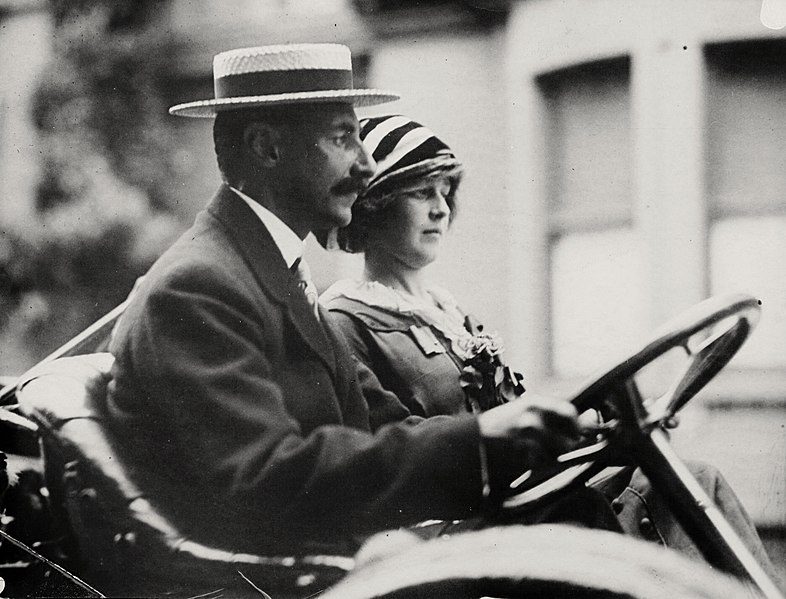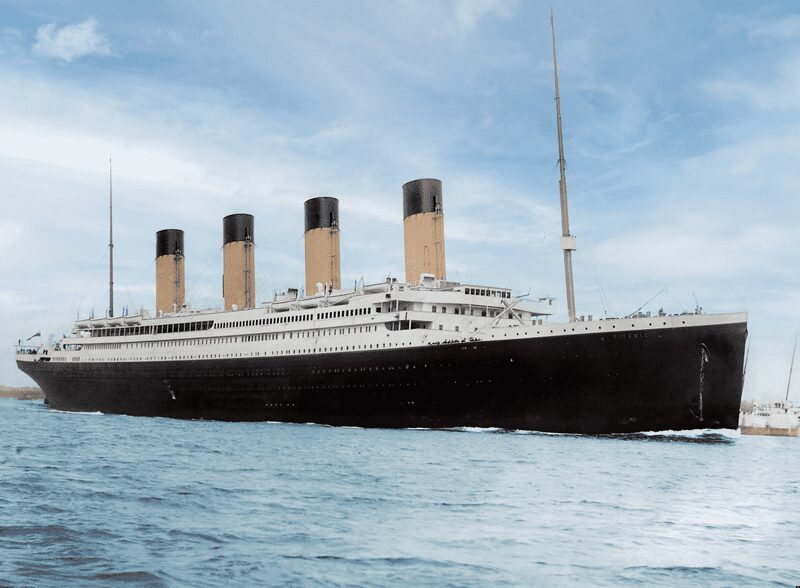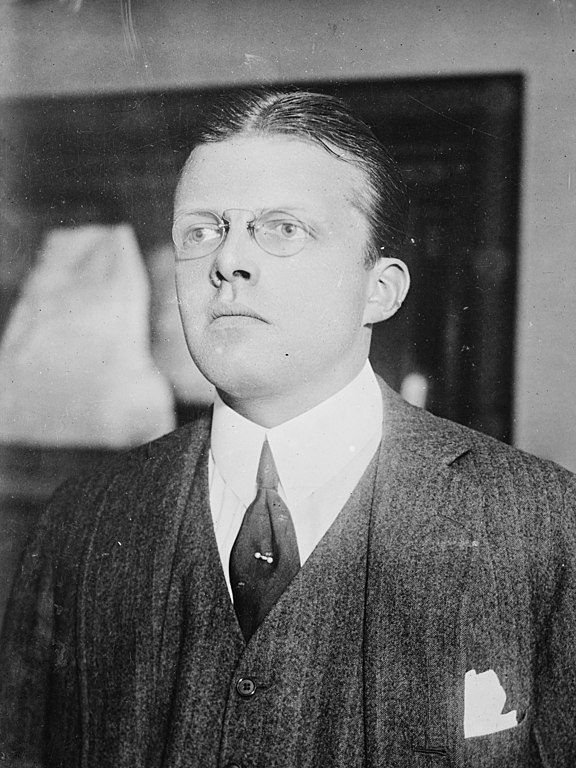In the vibrant tableau of New York’s Gilded Age, Madeleine Talmage Force, later known as Madeleine Astor, emerged as a prominent figure, a young debutante marrying into one of the wealthiest dynasties of the era. Born into the grandeur of turn-of-the-century New York, Madeleine’s life was destined to be entwined with fame, fortune, and an enduring legacy shaped by tragedy and resilience.
As we traverse the narrative arc of her existence, we explore her whirlwind romance and controversial marriage to Colonel John Jacob Astor IV, a man renowned as one of the richest individuals of his time. From there, we follow her on an ill-fated journey aboard the Titanic—a voyage that began with the promise of adventure but ended in catastrophe. Despite surviving one of history’s most infamous maritime disasters, her life did not retreat into the quiet margins of society. Instead, it continued to unfold in a series of dramatic turns marked by remarriage, scandal, and the constant scrutiny of the public eye.
As we explore the various facets of Madeleine Astor’s life, we shall unravel a tale rich in historical context and human emotion. It is a story that bears witness to the opulence of New York high society, the heart-stopping disaster of the Titanic, and a woman’s journey through the trials of her time, leaving an indelible imprint on the annals of history.
A starry-eyed debutante and the millionaire
Born on June 19, 1893, in Brooklyn, New York, Madeleine Talmage Force grew up in a prosperous family that had earned its wealth through a successful shipping enterprise. As members of New York’s high society, the Forces ensured that young Madeleine received an education befitting a woman of her status, fostering in her the social graces needed to navigate their refined circles.
However, even in the rarified air of New York’s elite, Madeleine’s destiny was to marry into a league of wealth far beyond her own. That destiny came in the form of Colonel John Jacob Astor IV, a man whose fortune was said to rival that of kings.

Colonel Astor, already a prominent figure in New York society due to his vast wealth, was freshly divorced from his first wife when he began courting the 18-year-old Madeleine. The pairing stirred a considerable amount of controversy. Astor, a 47-year-old divorcee, was only a year younger than Madeleine’s father, and even older than his own son from his first marriage. This 29-year age difference, combined with Astor’s recent divorce, sparked widespread dissent, but the couple remained unfazed.
In 1911, Madeleine became the second Mrs. Astor in a grand wedding ceremony that matched the lavishness of the Astor legacy. Despite the opulence, the event was attended by a relatively small group of guests, partly due to the Astors’ desire to avoid further scandal and partly because many in their social circle disapproved of the marriage.
The scandal did little to quench the public’s interest in Madeleine. She became a fixture in the media, her every move chronicled with relentless fervor. Undeniably, her life had dramatically transformed, but the greatest test of her resilience was yet to come.
The astounding fortune of John Jacob Astor
John Jacob Astor IV, often simply referred to as John Astor, was one of the wealthiest men of his time. Astor’s wealth was derived from several sources, including real estate and investment. He was a prominent member of the Astor family, which had significant holdings in New York City and were known as the landlords of New York. Astor himself owned several prominent buildings, including the Astoria Hotel.
However, his interests were not confined to real estate. He was also an inventor, a writer, and a businessman. Astor invested in several ventures and innovations of his time, including a turbine engine and a pneumatic road-improver. He also established the Astor Trust Company, which later merged with other banks to form the Bank of New York Mellon corporation.
It’s challenging to ascertain exactly how much Astor’s fortune would be worth today due to factors such as inflation, changes in the value of assets, and the growth and decline of various industries. However, at the time of his death, Astor was estimated to be worth around $87 million, which was a staggering sum for the early 20th century. Accounting for inflation, this would equate to approximately $2.3 billion in today’s money. This makes him one of the richest people in history, and his wealth would still rank him among the world’s billionaires today.
A voyage doomed
After their controversial marriage, Madeleine and John Astor sought respite from the clamor of New York high society by embarking on an extended honeymoon. Their journey took them to some of the most beautiful locales in the world—Egypt, Paris, and England. As the trip neared its conclusion in the spring of 1912, the couple, now expecting their first child, decided to return home aboard the most talked-about ship of the era—the RMS Titanic.

The night of April 14, 1912, started like any other aboard the magnificent vessel. But, around 11:40 p.m., the Astors were roused from their suite by the Titanic’s abrupt collision with an iceberg. Astor, seemingly unperturbed at first, investigated the incident himself. He then guided a visibly frightened Madeleine, along with other passengers, to the deck.
Unfolding events swiftly forced Astor to confront the dire reality. He helped Madeleine into lifeboat number four, asking permission to join her, given her pregnant state. As per the evacuation protocol—women and children first—his request was denied. He was last seen alive by Madeleine as he stoically bid her goodbye, reassuring her of the ship’s solidity and their inevitable reunion on it.
But the reunion was not meant to be. As Lifeboat 4 descended into the dark waters at 1:55 am, Astor remained solitary, witnessing the frantic attempts of others to release the remaining collapsible boats. On the starboard bridge wing, he shared a moment with journalist Jacques Futrelle, leisurely puffing on a cigarette. Just thirty minutes later, the colossal vessel vanished into the depths of the ocean. Astor, along with around 1,500 others, perished as the Titanic sank in the early hours of April 15. His body was recovered on April 22 and returned to New York, where it was buried in Trinity Cemetery.
Madeleine, who had huddled with the other survivors in lifeboat number four, was eventually rescued by the liner Carpathia. Her rescue, according to Captain Arthur Rostron, was marked by a solemn silence, a palpable demonstration of the catastrophe’s gravity.
The tragedy left Madeleine a young widow, bearing the weight of immense loss and the public’s relentless scrutiny. Little did she know that her journey, both literal and metaphorical, was far from over.
The conditional inheritance of Madeleine Astor
John Jacob Astor IV was one of the wealthiest men in the world at the time of his death on the Titanic. When Madeleine became a widow, she found herself the recipient of a considerable inheritance. According to John Astor’s will, Madeleine inherited a $5 million trust fund, a mansion on Fifth Avenue in New York City, and other properties, among other things. In today’s value, that sum would be worth around $130 million.
However, this inheritance was far from straightforward and came with restrictive conditions. The crux of these conditions was that if Madeleine remarried, she would lose her rights to the Astor wealth. In essence, the will proposed a choice for Madeleine: she could either remain a widow and continue to enjoy the wealth and social standing brought by the Astor name, or she could remarry and sacrifice the fortune she had inherited.
The details of this stipulation can be traced back to the prenuptial agreement Madeleine signed when she married John Jacob Astor IV. The conditions were clear and were the subject of much discussion and controversy at the time.
Widowhood and motherhood for Madeleine Astor
The return to New York was a sobering journey for Madeleine. The city’s skyline, once a symbol of progress and prosperity, now cast long shadows of the tragedy she had endured. Inheriting her husband’s fortune, Madeleine found herself amidst an ocean of wealth.
Amid these trying times, Madeleine gave birth to a son on August 14, 1912. She named him John Jacob Astor VI, after his late father, a symbolic way of keeping his memory alive.
Even as a young mother, Madeleine showed remarkable resilience. She assumed her new role with grace, focusing her efforts on raising her son amidst the whirlwind of societal expectations and personal grief. Despite her tremendous wealth, she faced the daunting challenge of navigating widowhood and motherhood within a judgmental society, forever under the public eye. These challenges, however, were merely the onset of a series of tribulations that Madeleine Astor would face in the years to come.
Madeleine’s new chapter
In the years following the Titanic tragedy, Madeleine Astor was propelled into an unforeseen journey of personal growth and transformation. Grappling with the lasting impacts of her traumatic experience, Madeleine stood at the precipice of a pivotal decision. She was in possession of a $5 million trust fund and a Fifth Avenue mansion, all tethered to the caveat of perpetual widowhood as stipulated in John Astor’s will. Despite these restrictions, Madeleine’s pursuit of happiness remained undeterred.
In 1916, she embarked on a new chapter, marrying her childhood friend, banker William Karl Dick, heir to a sugar refinery fortune. This decision resulted in her willingly forfeiting the comforts and privileges bequeathed by her late husband’s will.

Together, Madeleine and Dick had two children, John and William. For a time, Madeleine found in this family life a semblance of the normalcy she had long yearned for. Their marriage, which lasted fifteen years, was the longest among Madeleine’s marriages.
This union, however, was not to last. The couple divorced after fifteen years of marriage, triggering another significant shift in Madeleine’s life. The societal judgment she once faced as a young bride of a millionaire resurfaced as she now bore the label of a divorcee.
The twilight years of Madeleine Astor
Even after weathering the storm of the Titanic and a divorce, Madeleine Astor’s journey continued to be marked by love, loss, and heartache. In 1933, following her divorce from William K. Dick, Madeleine Astor married Enzo Fiermonte, a 26-year-old Italian boxer, shocking New York society. Fiermonte was only four years older than his stepson, John Jacob Astor VI.

The couple bought the expansive Dixie Plantation, in 1935, a majestic estate stretching across 600 acres in Charleston, South Carolina, with stunning vistas of the Stono River. Unfortunately, the marriage was anything but peaceful. Reports of violent altercations between the couple, leading to physical injury for Madeleine, cast a dark cloud over their relationship. In 1938, Madeleine decided to end her tumultuous relationship with Fiermonte, citing extreme cruelty as grounds for divorce. Never proven, there were whispers of Fiermonte being betrothed to Princess Giulia von Rio in Italy, although they never made it to the altar.
Her life was further marred by personal loss and scandal in the subsequent years. Her ex-husband Fiermonte sold an account of their life together to the tabloid, True Story, which added to her emotional distress. Her mother’s passing in the same period dealt her another blow, and she resorted to prescription drugs, leading to rumors of substance abuse.
On March 27, 1940, Madeleine’s turbulent journey came to an abrupt end. She passed away at the young age of 46 in Palm Beach, Florida, from heart failure, though rumors swirled that it was an overdose.
The echo of resilience
The life of Madeleine Astor exemplifies unwavering strength and determination in the face of overwhelming challenges. Despite being a part of high society and an heiress to substantial wealth, her life was punctuated by a series of heartbreaking events that began with the sinking of the Titanic and continued until her untimely death in 1940.
As a young bride, she experienced the loss of her husband in one of history’s most infamous maritime disasters. As a woman, she navigated a series of tumultuous relationships that pushed her into the public eye. Yet, throughout her life, Madeleine never allowed her circumstances to define her. She was a survivor, both in the literal sense and in spirit.
Her life story is a reminder of the human capacity for resilience in the face of unimaginable tragedy. Although her name is forever linked to the Titanic disaster, Madeleine Astor’s life was so much more than that single event. She was a woman of her time, bound by its constraints, yet continuously pushing against them.
Through her journey, Madeleine Astor continues to fascinate and inspire us, a poignant reminder that life’s greatest trials often shape its most resilient survivors. Her legacy continues to echo through history, touching hearts and evoking deep respect.


